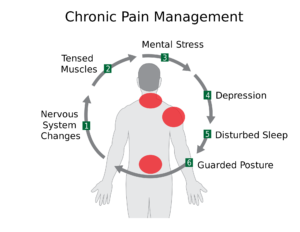Ever wonder what your therapists wished you knew and understood when coming in for treatment? Here are a few important things your Physical Therapist needs you to understand when going in for treatment sessions.
Keeping Appointment Schedules
 We do our best to manage all our appointments and we work diligently in booking treatment sessions while attending to walk-in patients. We hate to make you wait so our calendars are filled with the reminder of being respectful of your time all the time. We usually allow 30 to 45-minute gaps between appointments so if you’re running a bit late, please let us know in advance. If you’re unsure of your availability for your follow-up treatment sessions, please let us know ahead of time so we can re-book or re-schedule you right away. Missing treatment sessions delay your progress. The better we stick to schedules the faster we’ll be in helping your on the road to recovery.
We do our best to manage all our appointments and we work diligently in booking treatment sessions while attending to walk-in patients. We hate to make you wait so our calendars are filled with the reminder of being respectful of your time all the time. We usually allow 30 to 45-minute gaps between appointments so if you’re running a bit late, please let us know in advance. If you’re unsure of your availability for your follow-up treatment sessions, please let us know ahead of time so we can re-book or re-schedule you right away. Missing treatment sessions delay your progress. The better we stick to schedules the faster we’ll be in helping your on the road to recovery.
What to Wear
Attending physical therapy sessions is like performing exercise routines. You’re bound to sweat, stretch and move. We highly recommend that you wear comfortable, workout or moisture-wicking/dry-fit clothes or clothes that allow flexible movement.
Focus During Your Treatment Sessions
Gadgets turned off or on silent mode. Really. If it were up to us, we’d ask that your mobile device be temporarily checked-in for safekeeping by our front desk. Selfies are not mandatory but we can definitely take photos of you while your hard at work! We encourage our patients to avoid unnecessary distractions. If you have a toddler or a child with you, we ask that prior arrangements be made for a sitter to accompany you so you are not forced to attend to them during your treatment session.
Keeping a Health Diary
We’re partners here working to keep you on track towards your full recovery. While you might not be the type to keep a tab on your complete diet food and medication intake, at-home exercise routines and pain monitoring, we encourage our patients to be intentional in their wellness routines by keeping an account of various points in the day or week where they encounter pain or numbness in order to attribute them directly to activities causing discomfort. Here is a handy template to help you get started on your health journal!
Managing Pain/Pain Medication
If you’re on pain medication, it is best to stick to the dosage and frequency of intake prescribed. Skipping medication and untimely intake defeats the purpose of maximizing treatment results. We recommend taking your prescription medicines to help manage pain–so you can perform simple and functional exercises without suffering unnecessarily. Not taking medicines or not taking them on time will not help alleviate pain and will impact your therapeutic routines.
Source: Wikimedia

Do Your Homework
We prescribe exercise routines that you can do right in the comfort of your home. These can be performed with minimal supervision and technical equipment requirements. In addition to the health journal, we highly recommend that a family-member or your home-visit therapist help you perform the at-home activities to continue and increase the frequency that will help you reach your progress and recovery objectives.
Progress Check
 We will help you manage your progress but results don’t always come right away. At times, treatment gradually improves your condition but at other times the healing progresses at a snail’s pace. We are committed to your overall recovery. And while we want to help you get to that stage faster and with as little to no pain, we cannot guarantee this. There are no shortcuts to perfect health but with a healthy commitment to your treatment program, you can rest assured that long term and permanent recovery is our main objective.
We will help you manage your progress but results don’t always come right away. At times, treatment gradually improves your condition but at other times the healing progresses at a snail’s pace. We are committed to your overall recovery. And while we want to help you get to that stage faster and with as little to no pain, we cannot guarantee this. There are no shortcuts to perfect health but with a healthy commitment to your treatment program, you can rest assured that long term and permanent recovery is our main objective.
JetPT helps Physical Therapists focus on their patients over paperwork by teaching them how to improve their billing and collection situation. Click here to get a free consultation or follow us on Facebook!
 Loading
Loading